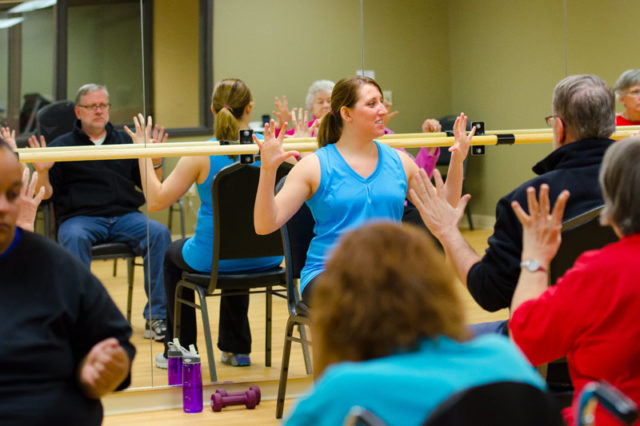The Cassia Life
By Jesse Watkins, Cassia’s own resident blogger
“The best fitness activity is one that you will stick with and make a habit of in your life!
This comment came my way while checking out how upper-age seniors can do enough exercise to build a strong, healthy body that wards off stroke, heart trouble and, yes, even prevents severe injury falls. Sounds like magic, doesn’t it!
The lead sentence above is from Nick Cook-Rostie, a third-year medical student at the U. and formerly a full-time personal physical trainer. Nick is a student resident of Augustana Apartments in Minneapolis. He and other students at the U are part of a student residence program that offers reduced rent to students who want to learn firsthand about older adults’ needs and lifestyles.
Contends Nick, “I am passionate about fitness, and I encourage people to find ways to increase their activity level. I believe in making sustainable lifestyle changes.”
He still provides a minimum of personal fitness training to others. Following is his set of instructions and recommendations:
- Adults should move more and sit less throughout the day. Some physical activity is better than none. Just ten minutes at a time of physical activity has been shown to have benefits.
- Adults who sit less and do any amount of moderate-to-vigorous physical activity gain some health benefits.
- For substantial health benefits, adults should do at least two hours and thirty minutes to five hours a week of moderate-intensity exercise., Alternatively, they can do one hour and fifteen minutes to two hours and thirty minutes a week of vigorous-intensity aerobic physical activity or an equivalent combination of moderate- and vigorous- aerobic activity. Preferably, aerobic activity should be spread out throughout the week. .
Key things Nick’s focus is on when working with seniors:
- As part of weekly physical activity, an older adult should do multi-component physical activity that includes balance training as well as aerobic and muscle-strengthening activities
- Older adults should determine their level of effort for physical activity relative to their level of fitness
- Older adults with chronic conditions should understand whether and how their conditions affect their ability to do regular physical activity safely
- When older adults cannot do 150 minutes of moderate-intensity aerobic activity a week because of chronic conditions, they should be as physically active as their abilities and conditions allow
These benefits are possible:
- Helps maintain the ability to live independently and reduces the risk of falling and fracturing bones
- Reduces the risk of dying from coronary heart disease and of developing high blood pressure, colon cancer, and diabetes
- Can help reduce blood pressure in some people with hypertension
- Helps people with chronic, disabling conditions improve their stamina and muscle strength
- Reduces symptoms of anxiety and depression and fosters improvements in mood and feelings of well-being
- Helps maintain healthy bones, muscles, and joints
- Helps control joint swelling and pain associated with arthritis
Looking for folks who perhaps come close to Nick’s recommended fitness discipline revealed 91-year-old Fred Johnson of Minneapolis and his son-in-law David Scheie, 63, of suburban Golden Valley. Both have worked out in gymnasiums, on bicycles and treadmills, alone and with others, and are quite clear as to why:
“On workout days, after I’ve showered and dressed, I feel fine and ready to take on just about anything. On days that I don’t work out I just don’t do much at all. In general, I seem to have more energy, my health is good. Another benefit is social, having friends to work out with. It’s big.”
David Scheie’s program over the recent past has been to run three or four times per week totaling fifteen miles, plus regular exercise work of twenty to twenty-five minutes.
He’s partial to running. ”It improves cognitive ability and aids emotional health, plus it’s a joy to participate,” he says. “I’ve been active with my adult children,” In recent years he’s run eight half marathons and a full marathon.
Encountering Augustana Apartments resident Judy Rudolph in the fitness room, I asked about the benefits of her exercise program. “Had a heart attack eight years ago which resulted in the pacemaker that I have, plus I have an irregular heartbeat,” she responded. Judy is in her eighties.
Her activity includes group aerobic work with a professional leader for thirty minutes three days per week, plus a twenty-minute workout five days per week. Judy feels the workouts protect her heart.
Whatever exercise you choose, it’s important to get a doctor’s opinion before you start—and to exercise carefully. It’s a good idea to ask a trainer for advice, as they can help you avoid accidents down the road.
Once you begin an activity, you will likely only stick to it if you are comfortable doing it and enjoy it. If you take time to find what you like best, you’ll likely find what I found: the rewards are worth it.









